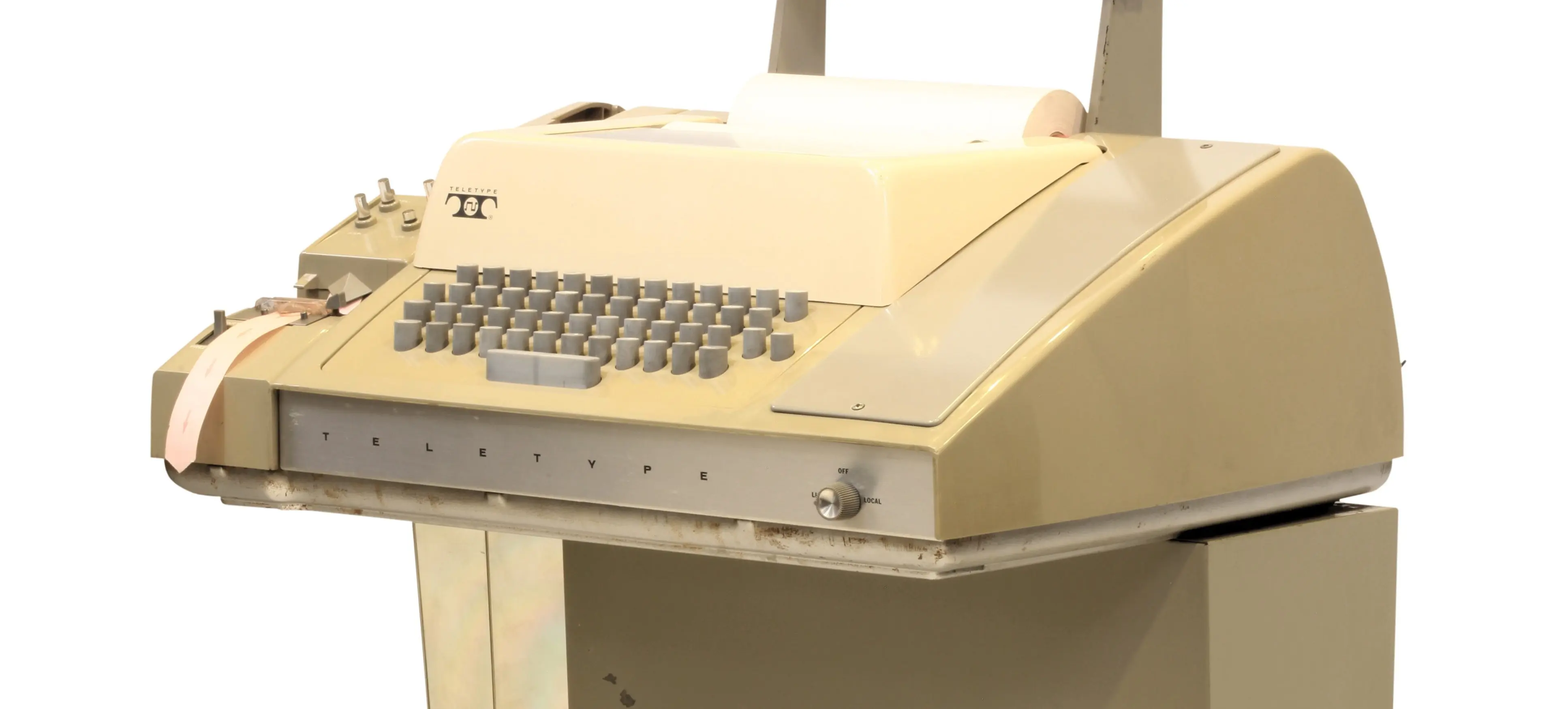From Teletypes to Terminals: A Brief History of Serial Communication
When you open a serial terminal on your computer, you're using a modern version of a technology with roots stretching back over a century. The simple text-based interface you see is the direct descendant of clunky, room-sized machines and the dawn of interactive computing.
~5 minutes

When you open a serial terminal on your computer, you're using a modern version of a technology with roots stretching back over a century. The simple text-based interface you see is the direct descendant of clunky, room-sized machines and the dawn of interactive computing. Understanding this history helps explain why serial communication is still so important today.
The Age of the Teletype (1900s - 1950s)
Before computers had screens, there were teletypes (or teleprinters). These were electro-mechanical typewriters that could send and receive messages over a pair of wires. When you typed a character on one machine, it was converted into a series of electrical pulses and sent "serially"—one bit after another—down the wire. A machine on the other end would receive these pulses and mechanically type the same character onto a piece of paper.
This was revolutionary. For the first time, text could be transmitted instantly over long distances without needing a human operator to translate Morse code. News agencies, businesses, and governments used vast teletype networks to communicate.
Key takeaway: The fundamental idea of sending characters as a serial stream of bits was born here.
The Rise of the Mainframe (1960s - 1970s)
When large mainframe computers appeared, they were incredibly expensive and filled entire rooms. It was impractical for every user to have direct access to the computer. The solution was time-sharing. A single powerful mainframe would serve dozens of users simultaneously.
But how did users interact with it? They used terminals. Early terminals were essentially teletypes connected directly to the mainframe. Users would type a command, the command would be sent serially to the computer, the computer would process it, and the result would be sent serially back and printed on paper.
Soon, paper was replaced by the cathode-ray tube (CRT) screen, giving us the video terminal. The famous VT100 terminal, released in 1978, set a standard for how terminals should work. It displayed 80 columns and 24 rows of text, a format that influenced computer displays for decades. These terminals were still "dumb"—all the processing happened on the remote mainframe—but they provided the instant, interactive feel of modern computing.
The Personal Computer and the Serial Port (1980s - 1990s)
As computers became smaller and more personal, they didn't need remote terminals anymore. The computer and the screen were in the same box! However, the need to communicate with other devices didn't go away.
Early PCs included a serial port (often called a COM port or RS-232 port) as a universal way to connect to peripherals. Modems, printers, mice, and scientific instruments all used the serial port to talk to the computer. The language they spoke was the same one refined over decades: a serial stream of bits representing text characters.
The Modern Era: USB and Virtual Serial Ports
Today, the classic 9-pin serial port is rare on consumer laptops, having been replaced by the much more versatile USB (Universal Serial Bus). But serial communication is far from dead—it just wears a disguise.
When you plug a modern device like an Arduino or an ESP32 into your computer via USB, the device's hardware includes a special chip that creates a virtual serial port. Your computer sees it just like an old-school COM port.
This is why serial terminals are still essential. They are the software that lets us talk to these millions of modern, USB-connected devices using the same time-tested, simple, and reliable method that originated with mechanical teletypes over 100 years ago.
It's a testament to the power of a simple idea: sending one bit at a time. To learn more about how this process works on an electrical level, check out our technical article, Under the Hood: How Serial Communication Works (Bits, Bytes, and Voltages).